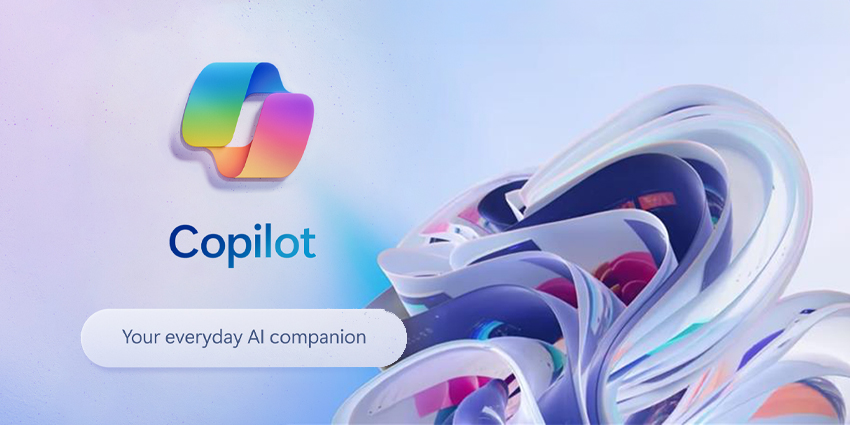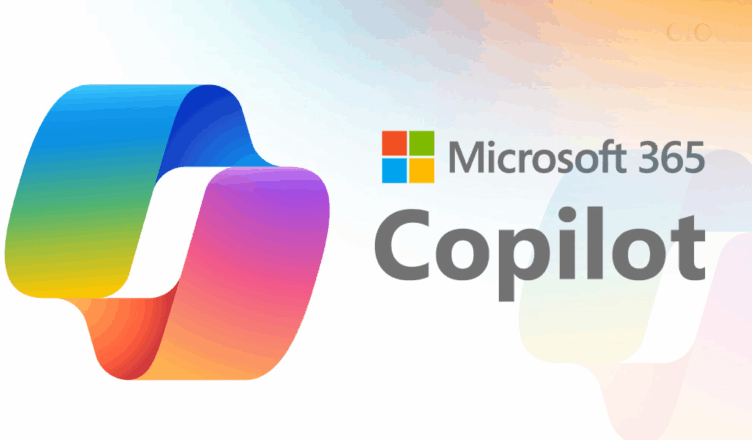Microsoft Copilot Review 2025
This comprehensive microsoft copilot review 2025 examines every aspect Artificial intelligence has fundamentally transformed how we approach productivity, coding, and daily computing tasks. Microsoft’s entry into the AI assistant space with Copilot represents one of the most significant developments in enterprise and consumer AI technology. This comprehensive microsoft copilot review 2025 examines every aspect of Microsoft’s AI-powered ecosystem, from its coding capabilities to office integration and overall user experience.
As we navigate through 2025, Microsoft Copilot has evolved from a promising AI coding assistant to a comprehensive suite of AI tools for developers and business users alike. This review explores the current state of Microsoft’s AI assistant, analyzing its performance, reliability, pricing structure, and real-world applications based on extensive testing and community feedback.
What is Microsoft Copilot?

Microsoft Copilot represents Microsoft’s ambitious foray into AI-powered assistance, encompassing multiple products and services designed to enhance productivity across various platforms. The ecosystem includes GitHub Copilot for developers, Microsoft 365 Copilot for office productivity, and Windows Copilot for operating system integration. This multi-faceted approach distinguishes Microsoft’s AI strategy from single-purpose competitors.
The microsoft copilot launch date marked a pivotal moment in AI development, with GitHub Copilot initially launching in technical preview in 2021 before expanding to the broader ecosystem we see today. The microsoft copilot release date in india followed global availability, ensuring users across different regions could access these AI-powered coding tools and productivity features.
At its core, Microsoft Copilot leverages large language models trained on vast datasets to provide contextual assistance, code generation, and intelligent automation. The system integrates deeply with Microsoft’s existing software ecosystem, creating a seamless experience for users already invested in Microsoft’s productivity suite.
The technology behind Microsoft Copilot combines natural language processing, machine learning, and contextual understanding to deliver relevant suggestions and automated tasks. This AI integration in Office applications and development environments represents a significant step forward in making artificial intelligence accessible to mainstream users.
Features and Functionalities

Microsoft Copilot’s feature set spans multiple domains, each tailored to specific user needs and workflows. The microsoft copilot features encompass code generation, document creation, data analysis, and intelligent automation across the Microsoft ecosystem.
In development environments, GitHub Copilot provides real-time code suggestions, function completions, and entire code block generation based on natural language comments. The AI coding assistant capabilities extend beyond simple autocomplete, offering contextually relevant solutions that adapt to coding patterns and project requirements. Developers can write comments describing desired functionality, and Copilot generates corresponding code in multiple programming languages.
Microsoft 365 Copilot transforms office productivity by integrating AI assistance directly into familiar applications. Users can generate documents, create presentations, analyze spreadsheet data, and compose emails using natural language prompts. The AI assistant understands context from existing documents and communication history, providing personalized suggestions that align with user preferences and organizational standards.
Windows Copilot brings AI capabilities to the operating system level, enabling users to control settings, find files, and automate system tasks through conversational interfaces. This integration makes advanced AI features accessible to users regardless of their technical expertise, democratizing access to AI-powered productivity tools.
The system’s ability to learn from user interactions and adapt to individual workflows sets it apart from static AI tools. Microsoft copilot code generation improves over time as it processes more user inputs and feedback, creating increasingly relevant and accurate suggestions.
Cross-platform synchronization ensures consistency across devices and applications, allowing users to maintain productivity whether working on desktop computers, tablets, or mobile devices. This seamless integration reflects Microsoft’s broader strategy of creating unified experiences across their product ecosystem.
Real-World Use Cases
In this microsoft copilot review 2025, we highlight practical use cases across industries—from developers to educators and business professionals. Microsoft Copilot’s versatility shines through diverse real-world applications across industries and user types. Software developers have embraced the platform for its ability to accelerate coding workflows, reduce boilerplate code generation, and provide intelligent debugging assistance. The AI tools for developers 2025 landscape shows Microsoft Copilot leading in adoption rates among enterprise development teams.
Business professionals leverage Microsoft 365 Copilot for document creation, data analysis, and communication enhancement. Marketing teams use the AI assistant to generate campaign content, analyze performance metrics, and create presentation materials. Financial analysts employ Copilot’s data processing capabilities to generate reports, identify trends, and create visualizations from complex datasets.
Educational institutions have integrated Microsoft Copilot into their technology curricula, helping students learn programming concepts while providing educators with tools to create instructional materials and assess student progress. The AI-powered coding tools serve as both teaching aids and learning accelerators, bridging the gap between theoretical knowledge and practical application.
Content creators and technical writers utilize Copilot’s natural language processing capabilities to generate documentation, create tutorials, and maintain consistency across large content libraries. The system’s ability to understand context and maintain voice consistency makes it valuable for organizations with extensive documentation requirements.
Small business owners and entrepreneurs benefit from Copilot’s accessibility, gaining access to AI capabilities that were previously available only to large enterprises. The microsoft copilot laptop review demonstrates how integrated AI assistance can transform individual productivity, enabling single users to accomplish tasks that traditionally required entire teams.
Performance and Reliability

Another key element covered in this microsoft copilot review 2025 is how reliable the platform is under real-world conditions. Evaluating Microsoft Copilot’s performance requires examining both quantitative metrics and qualitative user experiences. The question “is microsoft copilot reliable” frequently appears in developer forums and enterprise discussions, reflecting the importance of dependability in professional environments.
Code generation accuracy represents a critical performance metric for GitHub Copilot. Testing across multiple programming languages shows varying success rates, with higher accuracy in popular languages like Python, JavaScript, and C# compared to less common languages. The AI coding assistant demonstrates particular strength in generating standard algorithms, utility functions, and common programming patterns.
Response time and system integration performance have improved significantly since the initial launch. Microsoft copilot analysis shows consistent response times under normal usage conditions, with occasional delays during peak usage periods. The system’s ability to maintain performance while processing complex queries demonstrates robust infrastructure investment.
User feedback from microsoft copilot reviews reddit reveals mixed experiences, with praise for time-saving capabilities balanced against concerns about code quality and contextual understanding. Advanced users report higher satisfaction rates, suggesting that understanding how to effectively prompt and interact with the AI system significantly impacts user experience.
Enterprise deployments show positive performance metrics, with organizations reporting measurable productivity improvements and reduced time-to-completion for routine tasks. However, the need for human oversight and code review remains essential, particularly for critical applications and security-sensitive projects.
Reliability concerns center around occasional inaccurate suggestions, potential security vulnerabilities in generated code, and the need for continuous internet connectivity. These factors influence adoption decisions, particularly in regulated industries with strict security requirements.
Pricing and Access

The microsoft copilot review 2025 wouldn’t be complete without analyzing its pricing structure and access models for individuals, students, and enterprises.. Multiple subscription models accommodate individual developers, small teams, and large enterprises with varying feature sets and support levels.
GitHub Copilot pricing starts with individual subscriptions for developers, providing access to code generation and AI assistance features. Student and educator discounts make the technology accessible to academic users, supporting educational initiatives and skill development programs.
Microsoft 365 Copilot operates on a per-user subscription model integrated with existing Office 365 and Microsoft 365 plans. Organizations can add Copilot capabilities to their current subscriptions, providing seamless access to AI features across their productivity suite.
The microsoft copilot review 2025 free options include limited access through trial periods and educational programs. These introductory offerings allow users to evaluate the technology before committing to paid subscriptions, addressing concerns about return on investment and feature suitability.
Regional availability varies, with some markets receiving delayed access to certain features. The microsoft copilot release date in india aligned with global availability for core features, though advanced capabilities and language support continue to expand based on market demand and regulatory requirements.
Enterprise licensing includes additional features such as priority support, enhanced security controls, and administrative management tools. These premium offerings address organizational needs for compliance, user management, and integration with existing IT infrastructure.
Microsoft Copilot vs Competitors
As detailed in this microsoft copilot review 2025, Microsoft’s AI ecosystem holds a strategic advantage over isolated competitors. The competitive landscape for AI assistants includes established players like OpenAI’s ChatGPT, Google’s Bard, and specialized coding assistants like Tabnine and Kite. The GitHub Copilot vs Microsoft Copilot comparison reveals how Microsoft’s integrated approach differs from standalone AI tools.
Microsoft’s advantage lies in ecosystem integration, providing seamless experiences across development environments, office applications, and operating systems. This unified approach contrasts with competitors who focus on specific use cases or require separate integrations for different workflows.
Performance comparisons show competitive code generation capabilities, with Microsoft Copilot matching or exceeding alternatives in accuracy and relevance. The AI assistant’s ability to understand context from existing projects and user history provides advantages in personalization and workflow optimization.
Pricing competitiveness varies depending on user requirements and existing software investments. Organizations already committed to Microsoft’s ecosystem often find Copilot subscriptions cost-effective compared to purchasing separate AI tools for different functions.
Feature differentiation centers around Microsoft’s enterprise focus, with robust security, compliance, and administrative controls that appeal to large organizations. Competitors may offer superior performance in specific areas but lack the comprehensive enterprise features that Microsoft provides.
Integration capabilities represent a significant differentiator, with Microsoft Copilot leveraging existing APIs, data sources, and user preferences to provide more contextually relevant assistance. This deep integration creates switching costs that benefit Microsoft’s competitive position.
Pros and Cons
Based on this in-depth microsoft copilot review 2025, it’s clear that Copilot adds real value, especially for users working within Microsoft’s ecosystem. Microsoft Copilot’s strengths include comprehensive ecosystem integration, continuous improvement through machine learning, and accessibility across skill levels. The platform’s ability to adapt to user preferences and organizational workflows creates value that extends beyond simple task automation.
Time savings represent the most significant benefit, with users reporting substantial reductions in routine coding tasks, document creation, and data analysis. The AI assistant’s ability to handle repetitive work allows users to focus on creative and strategic activities that require human insight and decision-making.
Learning acceleration provides value for new programmers and business users exploring advanced features. Microsoft Copilot serves as an educational tool, demonstrating best practices and introducing users to capabilities they might not discover independently.
However, limitations include dependency on internet connectivity, potential security concerns with AI-generated code, and the need for human oversight in critical applications. Users must balance convenience against the risks of over-reliance on AI assistance.
Cost considerations affect adoption decisions, particularly for individual users and small organizations. While enterprise users often justify subscriptions through productivity gains, individual developers may find the microsoft copilot price challenging to justify for occasional use.
Quality inconsistency represents an ongoing challenge, with AI suggestions varying in accuracy and relevance. Users must develop skills in effective prompting and result evaluation to maximize the system’s value while avoiding potential pitfalls.
The Future of Microsoft Copilot

The future of microsoft copilot encompasses expanding AI capabilities, deeper integration across Microsoft’s product portfolio, and enhanced personalization based on user behavior and preferences. Microsoft’s substantial investment in AI research and development suggests continued feature expansion and performance improvements.
Emerging capabilities include multimodal AI support, enabling Copilot to process and generate content across text, images, and other media types. This expansion would transform how users interact with AI assistants, moving beyond text-based interactions to more intuitive and comprehensive assistance.
Integration with emerging technologies like augmented reality, voice interfaces, and IoT devices promises to extend Copilot’s utility beyond traditional computing environments. These developments align with Microsoft’s broader vision of ubiquitous AI assistance across all digital touchpoints.
The microsoft copilot analysis indicates growing enterprise adoption, with organizations increasingly viewing AI assistance as essential infrastructure rather than optional enhancement. This trend suggests continued investment in enterprise features, security enhancements, and industry-specific customizations.
Performance improvements through advanced model training, better contextual understanding, and reduced computational requirements will enhance user experiences while reducing costs. These technical advances support Microsoft’s goal of making AI assistance accessible to broader user populations.
Regulatory and ethical considerations will influence future development, with Microsoft investing in responsible AI practices, bias reduction, and transparency features. These efforts address growing concerns about AI impact on employment, privacy, and decision-making processes.
Comparison Table
| Feature | GitHub Copilot | Microsoft 365 Copilot | Windows Copilot |
| Primary Use Case | Code generation and development assistance | Office productivity and document creation | System control and file management |
| Target Users | Developers, programmers, technical teams | Business professionals, content creators | General Windows users, IT administrators |
| Integration | IDEs, code editors, development tools | Office applications, Teams, Outlook | Windows OS, system settings, applications |
| Pricing Model | Individual and team subscriptions | Per-user licensing with Microsoft 365 | Included with Windows updates |
| Offline Capability | Limited, requires internet connection | Limited, cloud-based processing | Partial, basic features available offline |
| Learning Curve | Moderate, requires development knowledge | Low, intuitive for Office users | Low, conversational interface |
| Security Features | Enterprise-grade, code scanning | Microsoft 365 compliance and security | Windows security integration |
| Customization | Project-specific training and preferences | Organizational templates and policies | System-level personalization |
Frequently Asked Questions
Is Microsoft Copilot worth it for individual developers? The value proposition depends on your coding frequency and project complexity. Professional developers working on multiple projects often find significant time savings that justify the subscription cost. However, occasional programmers or students might benefit more from free alternatives or trial periods before committing to paid subscriptions.
How does Microsoft Copilot handle sensitive or proprietary code? Microsoft implements enterprise-grade security measures, including data encryption, access controls, and compliance certifications. However, organizations with strict security requirements should review Microsoft’s data handling policies and consider on-premises deployment options where available.
Can Microsoft Copilot replace human developers or office workers? Microsoft Copilot serves as an assistant rather than a replacement, augmenting human capabilities rather than substituting for human judgment and creativity. The technology excels at routine tasks and provides suggestions, but human oversight remains essential for quality assurance and strategic decision-making.
What programming languages does Microsoft Copilot support best? GitHub Copilot demonstrates strongest performance in popular languages like Python, JavaScript, TypeScript, C#, and Java. Support exists for dozens of programming languages, though accuracy and feature completeness vary based on training data availability and language complexity.
How often does Microsoft update Copilot’s AI models? Microsoft continuously improves Copilot through regular model updates, feature additions, and performance optimizations. Major updates typically occur quarterly, with minor improvements and bug fixes deployed more frequently based on user feedback and technical requirements.
Can Microsoft Copilot work offline? Most Copilot features require internet connectivity for AI processing and model access. Some basic functionality may work offline, but the primary value proposition depends on cloud-based AI capabilities that require active internet connections.
What industries benefit most from Microsoft Copilot? Technology companies, financial services, healthcare organizations, and educational institutions show high adoption rates. Industries with significant documentation requirements, data analysis needs, or software development activities typically achieve the greatest return on investment from Microsoft Copilot subscriptions.
Conclusion
Microsoft Copilot represents a significant advancement in AI-powered productivity tools, offering comprehensive assistance across development, office productivity, and system management tasks. This microsoft copilot review 2025 demonstrates that while the technology delivers substantial value in appropriate use cases, success depends on understanding its capabilities and limitations.
The platform’s greatest strength lies in its ecosystem integration, providing seamless AI assistance across Microsoft’s product portfolio. Users invested in Microsoft’s technology stack will find Copilot’s unified approach particularly valuable, while those using diverse software environments may encounter integration challenges.
Performance and reliability have improved significantly since initial launch, with most users reporting positive experiences and measurable productivity gains. However, the technology requires ongoing human oversight and cannot replace human judgment in critical applications.
The microsoft copilot price structure offers options for various user types and organizational sizes, though individual users may find the investment challenging to justify for occasional use. Enterprise users typically achieve better return on investment through widespread deployment and integration with existing workflows.
Looking forward, Microsoft’s continued investment in AI research and development suggests ongoing improvements in capability, performance, and user experience. The future of microsoft copilot points toward more sophisticated AI assistance that adapts to user needs while maintaining the reliability and security requirements of professional environments.
For organizations and individuals considering Microsoft Copilot adoption, the decision should be based on specific use cases, existing technology investments, and long-term productivity goals. The technology offers genuine value for appropriate applications, but success requires thoughtful implementation and realistic expectations about AI assistance capabilities.
The question “is microsoft copilot worth it” ultimately depends on individual circumstances, but the evidence suggests that users who invest time in learning effective AI interaction techniques and integrate Copilot into their regular workflows typically achieve positive outcomes and sustained value from their investment.
